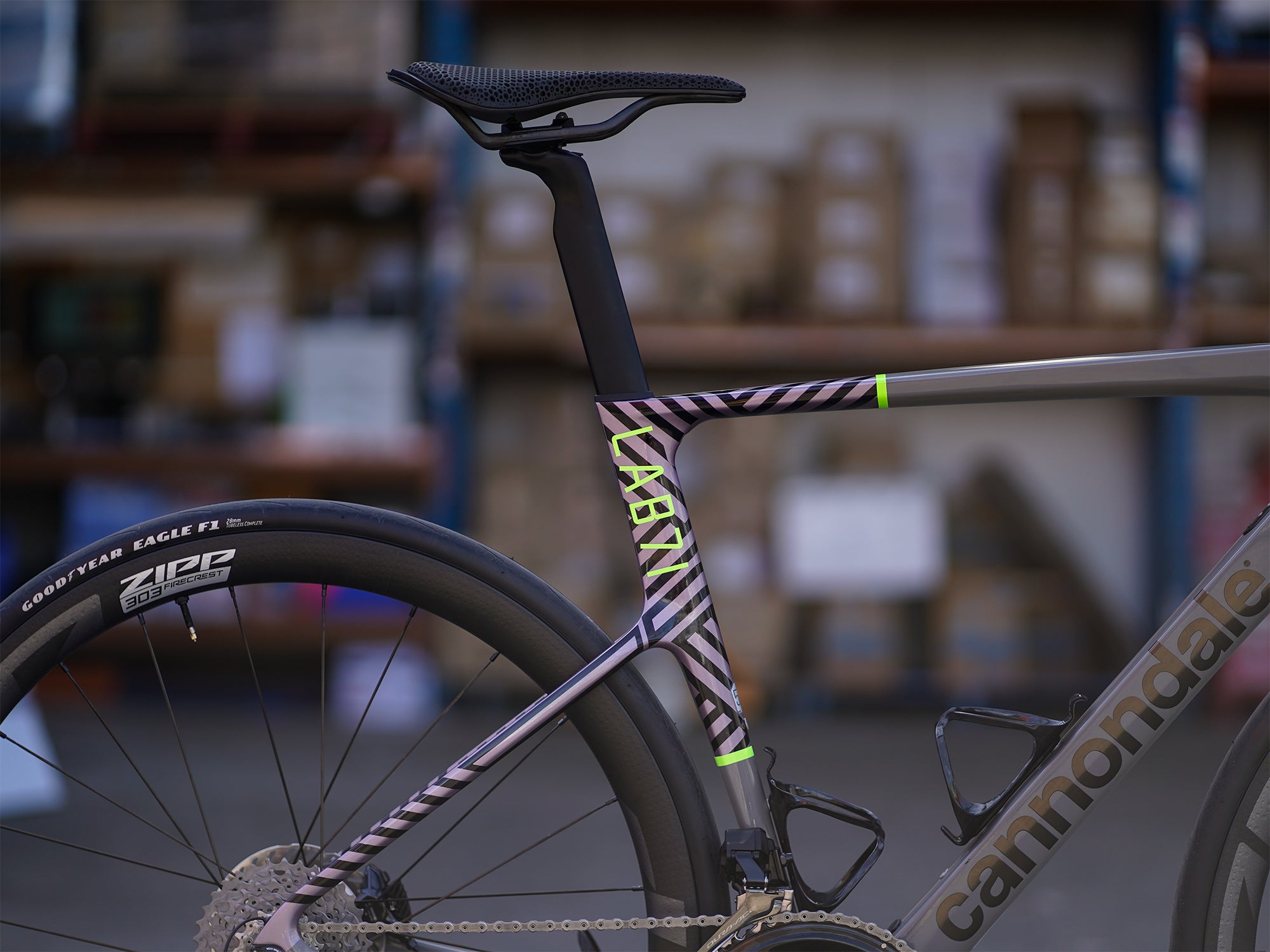First impressions
We have had some early access with the new Supersix Evo 4 in both Hi-Mod and also Lab71 variants and have formulated some first impressions to share.
Let's start with some facts.


The un-cut fork at 410g and the Lab71 frameset in 51cm coming in at 750g. Very light for an aero frame and not super light for a fork. But, it is probably more important for the fork to be a little heavier due to a few reasons. The fork is a massive factor in how a bike handles. Having a chunky fork can sometimes mean the difference between a skittish bike and a very planted solid bike. They have also shaped the fork extensively to take advantage of aero benefits of the new UCI rules which is obvious as soon as you have a look at one close up.

The new delta steerer is a hard piece of kit to describe in words. It uses fillers on the sides so you can utilise any round 1 1/8" stem so compatibility is not an issue. The frame kit also comes with multiple pieces of bearing covers for different stem applications.


The di2 Battery placement is also unique to the Supersix Evo. It is installed in a hole near the bottom bracket and is captured with pure friction enabled through the use of rubber o-rings. There is a strap dongle you fit over the battery to facilitate for the removal of the battery should you need to but ultimately, it keeps the weight towards the lowest part of the frameset (which is what you want) and allows cannondale's engineers to shape the seatpost and seattube exactly how they want without accounting for the dimensions of the battery.


The other point of note are obviously the BSA bottom bracket which is a good move mostly from a serviceability perspective. The fork compressor utilised is unique to the delta steerer. The top cap bolt is the typical reverse Cannondale female threaded bolt which causes some compatibility issues in that you will only be (for now) able to use the standard Cannondale top cap. We are sure there will be solutions either from Cannondale directly or 3rd party down the track for this but for now, you are stuck with utilising the top cap it comes with which sometimes does not integrate well with certain stems.
edit* Cannondale has an alternate fork compressor coming which will allow for the use of normal threaded top cap's.

With the bike built, we noted that the frame looked fast. Seeing so many frames this frame definitely had that newer gen feeling in that the shapes and the way it all comes together is something we have not seen in a frame before. We hazard a guess in saying that this is because of constant improvements in material and r&d but also because recently UCI changed rules on what is allowable with frames certified for use in competition and we think Cannondale has taken on-board some of these changed rules and built it into the the new Supersix Evo.

The complete Lab71 build pictured here weighed in at 6.6kg. Not a particularly lightweight build with 404's and EXS Aerovers but one that immediately was telling from the get go. The pickup speed is sensational. The low weight definitely helps in getting the bike up to speed but it also definitely had that aero bike trait in that it feels like it is "floating along" once it reached speed. No changes in geo means the bike handles as great as always but the fact the bike is even lighter now means that the bike is more nimble. This has pro's and con's in that it is fast reacting but also slightly twitchier. More a trait related to light bikes in general that we thought we would make clear.


Overall we think this bike is a great successor to the Supersix Evo 3. It feels like the Evo 4 in this rendition is finally complete. We are keen to get our own bikes and start riding it for some more long-term reviews. There will also be a few of us racing on the Evo 4's so it would be great to see how it holds up at crits and also longer stage races.
